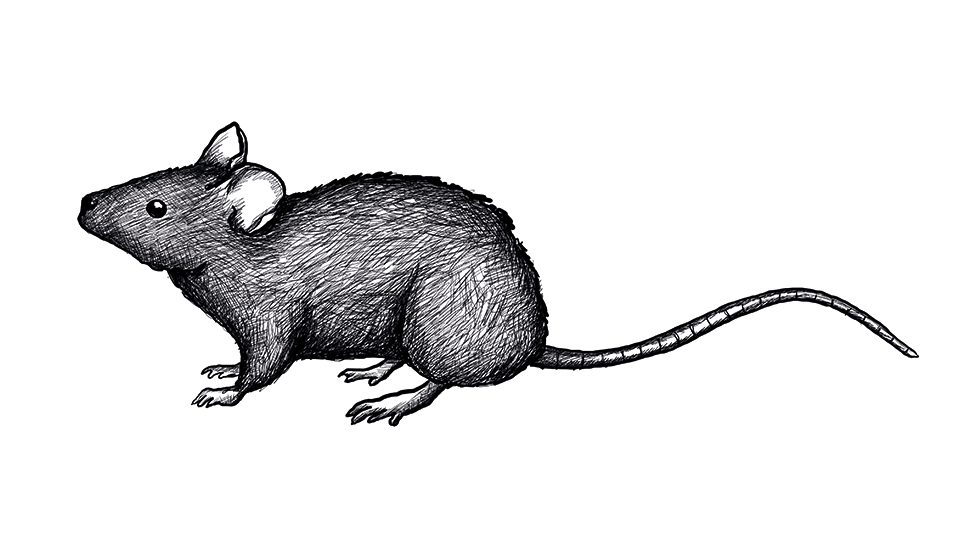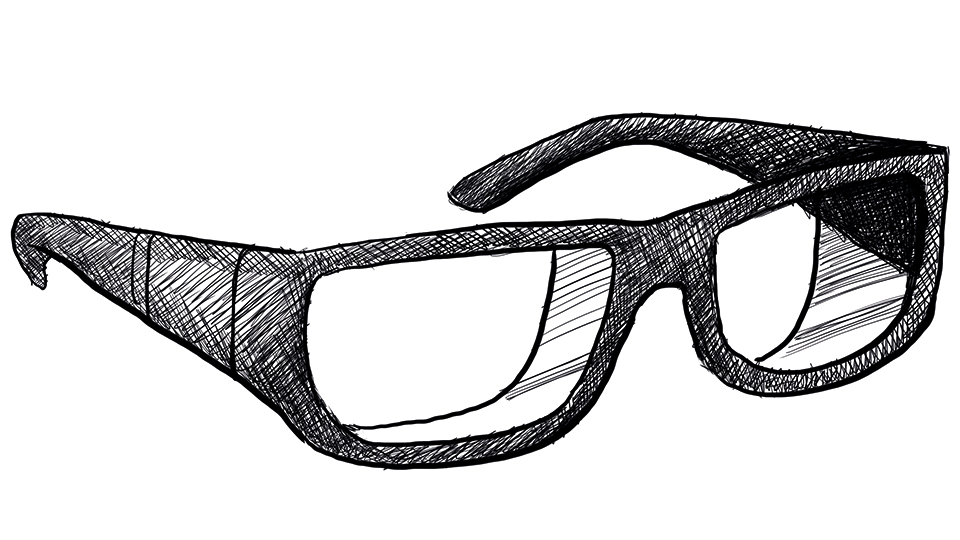- OT
- Science and vision
- Research
- To the letter
To the letter
From blood drops to a device that makes patients shed tears, OT chronicles the latest innovations and research in dry eye disease

23 June 2018
A
Artificial intelligence
Artificial intelligence (AI) could help clinicians to improve their categorisation of different types of dry eye.
The DR-1a diagnostic tool developed by Japanese company, Kowa, allows clinicians to identify subtypes of dry eye by classifying the appearance of interferometric fringe patterns.
Patterns may be categorised as pearl-like (normal tear condition), Jupiter-like (aqueous-deficient dry eye) or crystal-like (evaporative dry eye).
Researchers at the company have subsequently worked on creating software that can provide an automatic diagnosis with patterns obtained through the device.
The AI-diagnosis software successfully identified dry eye subtypes based on the interferometric fringe patterns.

B
Bitton
Canadian optometrist and University of Montreal associate professor, Dr Etty Bitton, is a global ambassador for the Tear Film and Ocular Surface Society (TFOS).
Dr Bitton emphasised that dry eye affects the quality of life of millions of patients every day, with some patients not able to cry at their child’s wedding or see clearly for minutes at a time despite blinking continually.
“Managing dry eye disease patients effectively and improving their quality of life is what is most rewarding,” she highlighted.
Blood drops
Research led by Moorfields Eye Hospital is exploring the potential of using a patient’s own blood to ease their dry eye symptoms.
As part of the study, 16 patients with severe dry eye syndrome being taught how to safely draw a small drop of blood from their finger using a lancet before applying it to their eye. The procedure was carried out four times a day for eight weeks.
The researchers report that damage to the eye surface was halved following the treatment, while the vision of patients improved.
"The process of diagnosing and managing a condition that really does transform patients’ lives is so satisfying"
C
Cataract
A study of 46 cataract surgery patients has found that dry eye is one of the most significant complaints six months after the operation.
Researchers observed the patient group before and after being implanted with a Rayner monofocal intraocular lens.
They found that self-reported symptoms of discomfort, dryness and watery eyes were some of the most significant complaints after cataract surgery in the study population.
The study, which was presented at the 2018 Association for Research in Vision and Ophthalmology (ARVO) annual meeting, also determined that tear film stability and symptom severity before surgery were not associated with a poorer refractive outcome.
Ciclosporin
An analysis of two phase three studies has found that the anti-inflammatory medication, ciclosporin A, reduces symptoms of moderate to severe dry eye disease.
The research, which was published in the British Journal of Ophthalmology, also highlights that the drug is effective in the treatment of severe dry eye disease among patients with Sjögren’s syndrome.
The data was taken from two randomised, six-month clinical trials.
Patients showed improvement in dry eye symptoms as measured by the OSDI questionnaire and corneal fluorescein staining.
D
Diabetes
Patients with diabetes may be particularly susceptible to dry eye disease.
A pilot study by researchers at Glasgow Caledonian University used the OSDI questionnaire to assess the severity of dry eye disease in 16 patients with and without diabetes.
They found that 59% of patients with diabetes had dry eye disease, while only 25% of participants from the control group exhibited symptoms.
All control cases of dry eye were mild, while 30% of those within the diabetes group had severe dry eye disease.
The researchers also report that among the group of diabetes patients, dry eye affected their ability to perform daily tasks such as reading, driving and using computers.
“Severity was linked to a reduced quality of life,” the authors observed.
“We suggest that those with diabetes should be routinely checked for dry eye when they attend ophthalmic appointments,” the researchers continued.
Driving
A study using a driving simulator has identified that dry eye patients have a lower vision-related driving ability than those without the condition.
A group of 20 dry eye patients and 20 healthy controls were assessed using the simulator as part of the research conducted at the Quinze-Vingts National Ophthalmology Hospital in France.
Researchers found that the average response time was longer and the percentage of missed targets was higher in study participants with dry eye disease.
The scientists concluded that the degradation of ocular optical qualities related to the condition is associated with visual impairments during driving.

E
Economic burden
Dry eye is not only a personal burden on patients but has an impact on national healthcare spending.
In the US, the annual cost for the management of dry eye disease was £2.85 billion, while in Singapore the annual spend was £111,148.
In Japan, the annual loss of productivity per dry eye patient was calculated to be £4564.
For dry eye patients who are managed by ophthalmologists, the annual cost for every 1000 patients in the UK is £815,127.
Epiphora
Watery eyes and dry eye may seem like unlikely companions, but sometimes they go hand in hand.
Epiphora can occur when a dry eye patient produces excess tears to make up for the dryness in the eyes.

F
Farrant
UK independent practice owner, Sarah Farrant, is the UK ambassador for TFOS.
The Cardiff University graduate is chair of the Somerset Local Optical Committee and was the lead optometrist for setting up an acute eye service in Somerset.
Ms Farrant told OT that dry eye is a common and debilitating disease that is significantly under diagnosed and under-managed in the UK.
“I consider it to be an essential part of my working role within clinical practice. The process of diagnosing and managing a condition that really does transform patients’ lives is so satisfying,” she shared.
Fluorescein
Sodium fluorescein can be used as a method of enhancing visibility of the tear film.
However, the Dry Eye Workshop II (DEWS II) report highlights that sodium fluorescein reduces the stability of the tear film and may reduce the accuracy of the measurement.
DEWS II notes that non-invasive tear breakup time measurements are becoming increasingly popular in recognition of the fact that tear film stability can be affected by fluorescein, temperature, humidity and air circulation.
G
Gender
Women may be more susceptible to dry eye disease, as well as being more prone to light sensitivity as part of the condition.
Researchers from the UK and Netherlands have investigated the connection between gender and symptoms of dry eye disease.
A cross-sectional study of 755 dry eye patients from the Groningen Longitudinal Sicca Study assessed dry eye disease symptoms using the OSDI questionnaire.
Scientists also performed the six most commonly used tests for diagnosing dry eye disease.
They found that women had a higher rate of mild and moderate symptoms of dry eye disease than men.
However, this difference was less apparent when it came to severe symptoms.
Independent of severity, women consistently reported more light sensitivity than men.
The authors concluded that gender has a large influence on the symptomatology of dry eye disease.

Hyaluronic acid
Which is the most effective concentration of hyaluronic acid (HA) artificial tear eye drops for the treatment of dry eye?
Following experiments in mice, South Korean researchers say the answer is 0.3%.
Scientists from Chonbuk National University Hospital compared the treatment effect of a balanced salt solution, 0.1%, 0.18% and 0.3% HA treatment in mice with dry eye disease over a 28-day period. All acidic solutions were preservative-free.
Researchers also observed symptoms of a control group of mice who received no treatment.
The scientists found that mice treated with 0.3% concentration HA showed a significant improvement in all clinical parameters when compared with the control and balanced salt solution groups, as well as mice treated with lower acid concentrations.
Although the highest concentration showed the most marked effect, all concentrations of the HA artificial tear eye drops had a therapeutic effect.
HA was shown to improve clinical signs of dry eye, increasing goblet cell counts and decreasing corneal apoptotic cells.
I
Incidence
Estimations of the global prevalence of dry eye vary depending on how the condition is diagnosed and which population is surveyed.
US studies estimate the prevalence of symptomatic dry eye is about 7% in women and 4% in men over the age of 50 years.
The prevalence in Australia is reported to be 7.4%, while in Canada around one in four people have the condition. In Japan, the prevalence increases to 33%.
The incidence of dry eye disease may be under-reported, as some patients do not recognise signs of the condition and seek treatment.
J
Job
Scientists have concluded that legal, administrative and customer service professionals have a higher chance of developing dry eye disease than people working in other fields.
While it may not be the first occupational hazard that jumps to mind, a Dutch study of 40,501 people found that a person’s job may influence their chance of developing dry eye disease.
Study group participants were classified into 10 occupational groups.
Jobs associated with a higher risk of dry eye disease were professionals, technicians, associate professionals and clerical support workers.
Service and sales workers, skilled agricultural workers, plant and machine operators and assemblers and elementary occupations were linked to a lower risk of the condition.
Within the 10 occupational groups, some jobs had a particularly high or low risk of dry eye disease.
Highest risk roles were legal, administrative and customer service professionals, while those working as animal producers, market gardeners, shop sales people and cleaners were least susceptible.
K
Keratoconus
New research suggests keratoconus patients who use gas permeable corneal lenses report more dry eye symptoms than those who use scleral lenses.
US researchers used OSDI responses gathered from 422 keratoconus patients through an online survey.
They found that those whose used gas permeable corneal lenses had a significantly higher OSDI severity score than those who used scleral lenses.
Specifically, those wearing gas permeable lenses were more likely to report grittiness, feeling uncomfortable in windy conditions and areas with low humidity than scleral lens wearers.

L
LASIK
It is estimated that half of patients who undergo laser in situ keratomileusis (LASIK) have symptoms of dry eye following the procedure.
Researchers have suggested that the most likely reason for this is the alteration of the corneal nerves as part of the surgery.
However, in most patients corneal sensitivity and the clinical indicators of dry eye return to normal within a year due to the recovery of the corneal nerve plexus.
M
Menstrual cycle
Symptoms of dry eye disease may alter in women depending on the phase of their menstrual cycle.
An Australian study of 26 young, healthy women found that blepharitis was lower at day seven of the cycle than day 21, while meibomian gland dysfunction was lower at day 14 (the ovulation phase) compared to day 21 (the luteal phase).
Researchers also found that the impact of lifestyle factors, such as stress and diet, on dry eye disease was more pronounced during certain phases of their menstrual cycle.
Lifestyle factors had a greater effect on dry eye disease symptoms during the ovulation phase compared to the follicular phase (day seven) and luteal phases.
N
Neurostimulator
A new handheld device helps to combat dry eye by stimulating the production of tears.
The TrueTear device uses nasal stimulation to offer a drug-free alternative to lubricating eye drops and topical ointments.
The Cincinnati Eye Institute found that when 97 patients with moderate to severe dry eye used the device for 180 days the patients’ tear levels were significantly higher after using the technology.

O
Osmolarity
Measuring tear film osmolarity is a common way of diagnosing and managing dry eye disease.
Technology that helps clinicians measure osmolarity include the I-Pen tear osmolarity system – a handheld electronic device that provides measurements of osmolarity through around five seconds of contact with the eyelid tissue.
P
Placebo
The use of fatty acid supplements to treat dry eye is “no better than placebo,” according to new US research.
As part of a year-long multi-centre trial, 349 dry eye patients either took a daily oral dose of fish-derived n−3 eicosapentaenoic and docosahexaenoic acids or an olive oil placebo.
At the end of the 12-month trial period, the average change in OSDI scores between the two groups was not significantly different.
However, mean symptom scores for people in both groups had improved substantially after a year.
Study author, Dr Maureen Maguire, observed that the findings highlight the difficulties of judging whether a treatment actually helps a particular dry eye patient.

Q
Quality of life
Research has suggested that the quality of life impact of dry eye disease is comparable to that experienced by patients living with mild psoriasis and moderate-to-severe angina.
A study published in the American Journal of Ophthalmology found that patients with dry eye disease were three times more likely than their healthy peers to experience problems completing daily activities, such has reading, using a computer and carrying out professional work.
R
Risk factors
An epidemiology report compiled as part of DEWS II identified a series of factors that can influence a person’s risk of developing dry eye.
Innate characteristics that are known to increase the likelihood of developing the condition include being female, older and of Asian ethnicity.
Those with connective tissue disease, Sjögren syndrome, androgen deficiency and meibomian gland dysfunction are also at a higher risk.
Modifiable factors that influence risk include computer use, contact lens wear, hormone replacement therapy and hematopoietic stem cell transplantation.
Environmental factors which can be risk factors for the condition encompass polluted, low humidity environments and offices that have hallmarks of sick building syndrome.
"Dry eye disease is much more than a history-and-symptoms-elicited grumble or hospital glaucoma clinic annoyance"
S
Systemic medication
Medications that have been linked with the development of dry eye include antihistamines, antidepressants, anxiolytics and isotretinoin.
It has also been suggested that dry eye may results as a side effect from anticholinergic medication, diuretics and beta-blockers, but the DEWS II report concluded that the evidence around these medications is inconclusive.
T
TFOS
The conundrum of defining dry eye has been addressed by the Tear Film and Ocular Surface Society (TFOS) with its DEWS II report.
The report was published last year and updates an original definition published more than a decade ago.
The new definition describes dry eye disease as: "a multifactorial disease of the ocular surface characterised by a loss of homeostasis of the tear film and accompanied by ocular symptoms, in which tear film instability and hyperosmolarity, ocular surface inflammation and damage and neurosensory abnormalities play etiological roles."
U
Umbilical cord
Umbilical cord serum containing essential tear components could be a safe and effective treatment for severe dry eye disease.
South Korean researchers used the serum to treat 31 patients with severe dry eye disease.
Two months after treatment, significant improvement was observed in symptom score, while goblet cell density improved significantly.
V
VIPs
Actress, Jennifer Aniston, and tennis star, Venus Williams, are some of the most well-known celebrities to share their experiences of living with dry eye.
The star of the sitcom, Friends, told Fox News that when the condition was at its worst, she was using eye drops two or three times every hour for relief.
She said her eyes became swollen and irritated, and reading scripts started to become “impossible.”
“It got in the way of the joys of my daily life,” Ms Aniston shared.
Ms Aniston is a paid spokesperson for the pharmaceutical company, Shire.
In May, Alcon announced that Ms Williams would be part of an educational campaign to reach out to those with dry eye.
Ms Williams, who has Sjögren syndrome, said that her eyes are critical on the court to track the ball and watch her opponent.
She has eye drops on hand in case her dry eye symptoms flare up during a match.
“Dry eyes are extremely inconvenient because my livelihood, my joy and my dreams rely on my eyes functioning,” she said.

W
Wolffsohn
UK academic Professor James Wolffsohn is on the board of TFOS. He chaired a DEWS II subcommittee that defined how the diagnosis of dry eye should be made and how the sub-classification should be determined before treatment.
“Dry eye disease is much more than a history-and-symptoms-elicited grumble or hospital glaucoma clinic annoyance,” Professor Wolffsohn emphasised to OT.
“It is common, chronic and debilitating, with associations with depression and loss of productivity. In patients with severe disease, it has been rated as equivalent to angina or dialysis,” Professor Wolffsohn added.
Wrap-around eyewear
Specialised spectacles that wrap around the eyes like goggles are recommended by the NHS as one self-help option for dry eye.
The glasses provide a ‘moisture chamber’ that helps to protect the eyes from irritants.

X
Xiidra
The dry eye treatment, Xiidra (lifitegrast ophthalmic solution) 5%, was the first of a new class of medications to receive approval from the US Food and Drug Administration.
The safety and effectiveness of the drug has been assessed in more than 1000 patients in four randomised, controlled trials.
The studies found that groups treated with Xiidra demonstrated more improvement in both the signs and the symptoms of eye dryness than the groups treated with placebo.
Y
Young patients
Although the prevalence of dry eye disease increases with age, younger patients who spend large amounts of time in front of a screen are also prone to the condition.
A study published in BMC Opthalmology in 2016 examined dry eye rates in a group of 916 South Korean children.
Researchers found that 6.6% of children showed symptoms of dry eye disease. Mean daily smartphone use was higher among those with the condition, while mean daily outdoor time was lower.
Only 2.8 % of children who lived in rural areas had dry eye, compared to 8.3% of study participants from urban areas.
After the children with dry eye disease stopped using their smartphones for four weeks, both subjective and objective symptoms improved.

Z
Zzzzzzz
The link between dry eye and lack of sleep has been examined by researchers at Shanghai’s Fudan University.
A study of 106 dry eye patients found that they had poorer sleep quality and mood levels than 50 age and gender matched controls.
The scientists also report that sleep duration has an association with lacrimal secretion.
“Intervention for sleep and mood disorders in dry eye disease patients may be needed to improve their quality of life,” they emphasised.
Image credit: Lisa Maltby


Comments (0)
You must be logged in to join the discussion. Log in